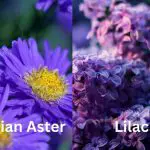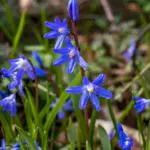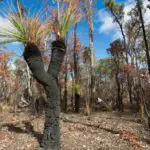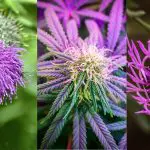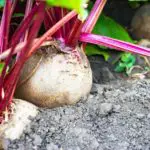Last Updated on February 9, 2022 by William
Are blue pumpkins real?
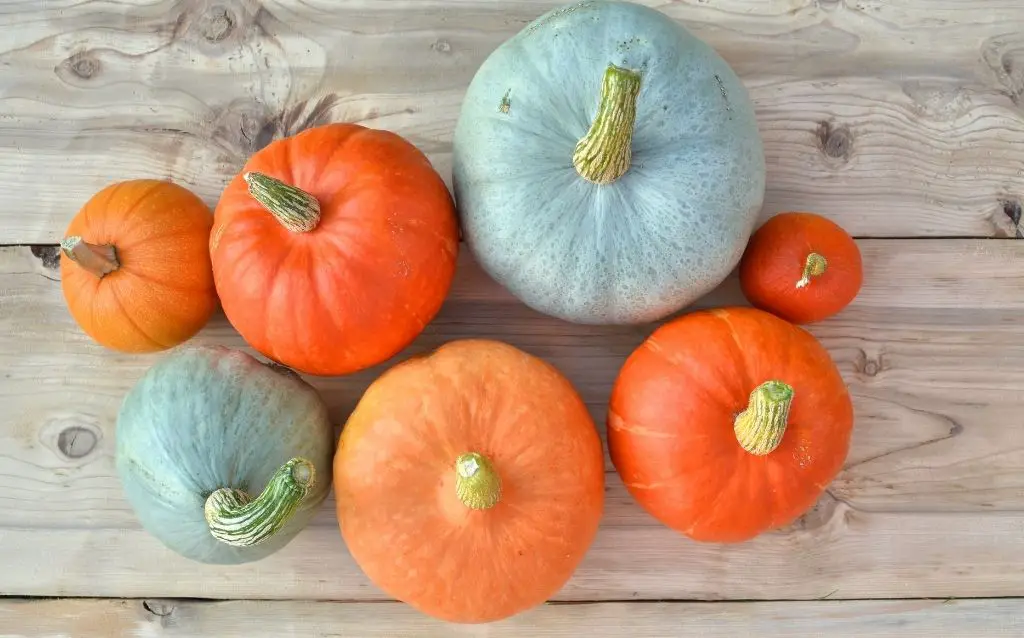
Pumpkins come in different colors and blue pumpkins are real. The most known color for pumpkins is orange. Blue pumpkins are common in some parts of the world such as in Australia, the United States, and New Zealand. These pumpkins feature dusty blue-green rinds on the outside and the most common include Queensland pumpkin, Jarrahdale, Blue Lakota, and Australian Blue among others.
Natural blue pumpkin varieties
There are over 20 blue pumpkin varieties. These include Blue Doll, Baby Blue Hubbard Squash, Royal Blue, Tokyo, Blue Moon, Jarrahdale, and Queensland. The Queensland Blue Pumpkin is a common and most renowned variety in most parts of the world.
List of natural blues pumpkin varieties
- Queensland Blues Pumpkin
- Jarrahdale Pumpkin
- Blues moon pumpkin
- Baby Blue Hubbard squash
- Blue bayou pumpkin
- Marina di Chioggia pumpkin
- Tokyo blues squash
- Royal blue pumpkin
- Blues prince pumpkin
- Blue ice pumpkin
- Blue harvest pumpkin
- Cresco squash
Video – Queensland Blue, one of the best varieties of blue pumpkins
Infographic – Varieties of natural blue pumpkins

Queensland blue pumpkin – one of the best varieties
These pumpkins grow into medium to large sizes and weigh about 6 – 10 pounds. They are deeply ribbed, and with dusty blue-grey skin. Its yellow-orange flesh is sweet and is the best for pancakes and pumpkin puree. The shape is flattened at both ends and looks almost cylindrical.
The Queensland variety originated from Australia and takes 17 – 19 weeks to harvest. It is also known as Cucurbita Maxima as its scientific name.
Table – Queensland Blues Pumpkin growing facts
| Common Name | Queensland Blue Pumpkin |
| Scientific name | Cucurbita Maxima |
| Origin | Australia |
| Weight | 6 – 10 pounds |
| Harvesting | 17 – 19 weeks |
| Germination | 8 – 14 days |
| Spacing | 1m apart |
| Growing conditions | Full sun and well-drained rich soil |
| Planting season | Spring and summer |
When you plant them in the right conditions as indicated, you will surely make a harvest. However, it is important to note this is not for all the varieties since some varieties may have varying conditions.
Where do blue pumpkins come from originally?
The blue pumpkins originated from Australia before spreading to other parts of the world. Currently, this variety is found in most countries and is common in New Zealand and the United States.
Can you grow a blue pumpkin?
You can grow blue pumpkins during summer or spring. So long as you have the right conditions, it is possible to grow them from seeds. It only requires rich and well-drained soil.
Blue pumpkin seeds

Blue pumpkin seeds serve two purposes. You can either clean and roast them as a snack or plant them. If you just harvested it from your farm, then you can roast the seeds to make a toasted snack.
If you are looking to plant them, you can find them on Amazon or any other market that sells blue pumpkin seeds. When planted, the Blue Jarrahdale seeds will take 7– 14 days to grow and the Queensland will take 8 – 14 days.
How long does it take to grow a blue pumpkin?
There are different varieties of blue pumpkins, but the average it takes to grow from germination to harvesting is between 17 – 19 weeks.
Are blue doll pumpkins edible?
Blue Doll Pumpkin is one of the varieties of blue pumpkins. They weigh between 15 – 20 pounds each fruit and are edible. The fresh is bright orange and is good for making soups, pies, or canning for later use.
They are sweet and delicious and are a great choice for baking as well. You can use it to make pancakes among other dishes.
Blue pumpkin recipes
Blue pumpkins are great in making savory dishes and in baking. You can use them to make soup, scones, and gnocchi. With the different varieties of blue pumpkins, you can make different recipes out of each.
Hungarian blue squash
The Hungarian blue squash features orange-yellow flesh. It is sweet and not too sugary. Also, it is dense and thick and that makes it good for soups and savory dishes. You can roast or bake in the oven.
One of the ways to make is to peel and slice them into pieces, add salt, butter, and black pepper, then bake in an oven at 350 degrees Fahrenheit for about 30 minutes. When it is done, test for softness and serve with any other dish.
What are blue pumpkins good for?
Blue pumpkins are sweet and delicious when roasted, baked, or boiled. It is, therefore, good for savory dishes such as soups and making pumpkin puree. The pumpkins are also useful for baking and making pancakes, scones, or other mixed dishes. Apart from that, they are useful for décor as well.
Blue pumpkins décor
In some cultural celebrations, blue pumpkins are used in home décor. They are normally curved into pleasant shapes or art and placed in front of the house.
The idea of using blue pumpkins for decorations has gained popularity and is spreading across the countries where the blue pumpkin varieties are common. Some artworks from different materials that resemble blue pumpkins have also emerged and are available on the market for use in decoration purposes.
Blue pumpkin Halloween
Halloween is a kind of celebration that runs in some countries on every 31st of October. On this day, people and children wear traditional and colorful regalia and blue pumpkins have also been used.
The blue pumpkins are used because they are attractive and the idea started on the social media platform to raise awareness about autism spectrum disorders (ASD). When it gained popularity, it found its way into Halloween celebrations due to its attractiveness. The use of blue pumpkin on Halloween is regarded as a symbol of inclusion.
What does a blue pumpkin on the porch mean?
The blue pumpkins on the porch are used to serve a message to visitors. They are placed to indicate children who suffer from autism spectrum disorder and to make kids with food allergies happier and safer.
This also serves the visitors with the message to extend some patience to children who suffer from food allergies and autism. The reason why they are displayed porches is to show that these children experience some challenges that include dietary restrictions, sensory overload, and verbal interaction challenges.
Final thoughts
There are more than 20 varieties of blue pumpkins and the most common are the Queensland and the Jarrahdale. These are the best varieties and Queensland is even more popular in most countries. They are delicious and useful for baking, making soups, scones, purees, and pancakes among other dishes.


